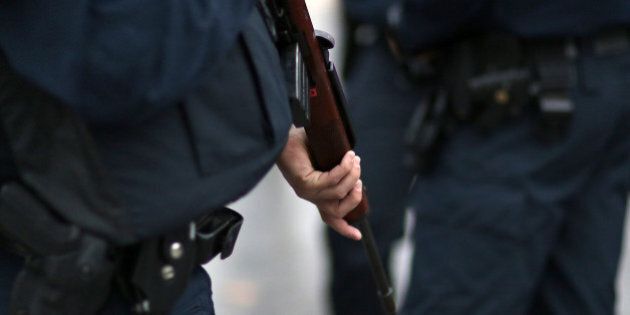
While it is early stages in any investigation, it appears that there was no hostage-taking incident at the Bataclan concert hall Paris on 13 November 2015. It was simply three men actively engaged in killing people in a confined and populated area: an active shooter attack.
The Paris attacks should illustrate to Australian authorities that there are important difference between an active shooter and a hostage taking situation, especially when it comes to appropriate training. Unfortunately, at this stage Australia's police forces are playing catch-up.
The French Police that stormed the Bataclan concert hall showed the highest levels of bravery: putting their own lives in danger to stop the senseless murder of innocent people. What escaped most people's observations was the fact that the French police involved were fully trained in active shooter response tactics.
Hostage situations involve threats by persons who have barricaded themselves in a building, or protected area, but are not actively harming anyone: although they may have threatened to do so.
Police responses to hostage taking are all about a measured and delayed response. Police best practice in these incidents involves cordoning an area and containing the hostage taker. Police efforts are then focussed on negotiating with the offender or offenders to prevent violence, achieve the release of prisoners and a resolution that does not result in deaths.
Active shooter situations occur when police officers on the ground believe that the armed individual is actively inflicting injuries or death.
Many active shooters are not targeting specific individuals. The shooter's aim in these cases is to inflict mass casualties as quickly as possible, which is what we saw in Paris this past weekend.
In active shooter incidents, a delayed police response could have horrific consequences. An officer who uses an active shooter response model will focus on stopping the shooter and reducing the number of deaths.
It is of critical importance that officers are trained to handle and respond to a scene where he or she can hear shooting, screams, or other indications that the perpetrator is actively shooting or threatening victims. Such responses are paramount to saving lives.
In these active shooter scenarios police may be forced to enter a building alone or in small numbers. Such immediate responses may not be optimal to the safety of police officers but the threat to the public justifies such risks. There have been multiple examples where such a response has made a significant difference to the number injuries or fatalities, with Paris being the most recent.
Looking at the scene in the Paris concert hall we saw an individual who was shooting innocent individuals while his two counterparts were controlling the crowd. These three men were focused solely on inflicting as much damage as possible as quickly as possible: there was no room to cordon, contain and negotiate responses.
It was critical that the police rapidly assault the Bataclan concert hall. By immediately assaulting the building French police saved lives. If the police had of delayed their decision the body count would have been much higher.
Since the Charlie Hebdo terrorist attack last year, French authorities have stepped up their active shooter training programs. The French officers who arrived at the recent terrorist attack appeared to be utilising such training to its fullest.
But the French are not alone in employing these new tactics. Many police forces have stepped up their training in the wake of recent events in France, the United Kingdom, Canada and America.
Australian police use the active shooter response for their specialised tactical units. The need for this type of training for general duties officers has been noted by Australia's state, territory and federal police leaders. These leaders advise that they are on a path to train frontline officers in this potential lifesaving method. But they are not there yet.
One of the first lessons from the Paris attacks for Australian policy makers is that, in light of a rising domestic terror threat, our active shooter police response capability needs to be rapidly enhanced.
___________________
John Coyne is Director of the border security program at the Australian Strategic Policy Institute.
Vernon White, a sitting Canadian Senator, is visiting fellow with the Australian Strategic Policy Institute and a Canadian senator with over 30 years of policing experience.